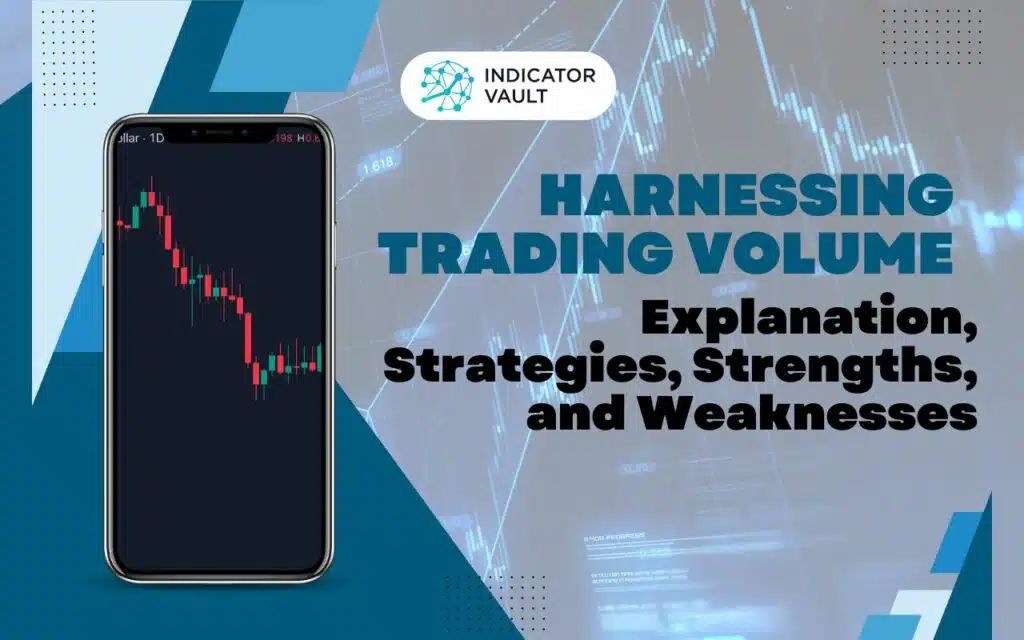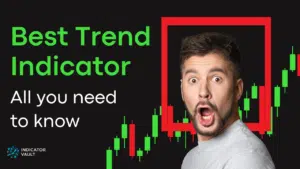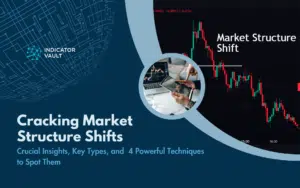Trading volume is one of the most embraced classical statistics in retail analysis. It reveals the extent of a market’s activity, which savvy traders impressively utilize for forecasts. Unfortunately, inexperienced folks appreciate it much less than recommended.
This concise article provides insight into volume, its strategies, and caveats for outstanding results. Readers will also earn exclusive access to an industry-leading technical tool predicated on the concept
Table of Contents
1. Overview of Trading Volume and Possible Strategies
In the financial sphere, trading (or market) volume represents the total shares or contracts traded in a defined period.
Stocks, bonds, commodities, options, and futures contract traders desire this data the most for insightful analysis. However, exchanges report volumes on almost every financial market.
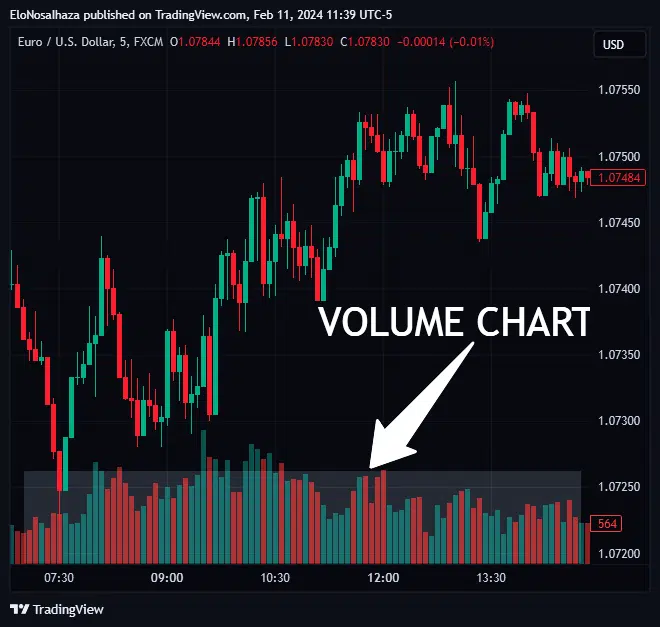
Assuming investors bought and sold 200 company stocks within one trading day, the volume will be 400 shares even if only 200 were involved.
The value is a quick measure of a security or market’s activity.
Hence, traders use it and its several derivatives for forecasts.
For example, as a general rule of thumb, trading volume can help confirm a trend’s strength when both move in tandem for a significant period.
In essence, if the price is falling, the volume should decrease. However, in a sustained bullish trend, it should rise proportionately.
The market volume also confirms reversal expectations due to reduced activity.
Proponents consider trends (regardless of how promising they appear) weak when their moves don’t correlate with a security’s price. Thus, traders take any continuation signal with a grain of salt, waiting for a retracement or reversal.

Analysts also anticipate and make forecasts with volume breakouts – periods when the figures exceed average values or pre-defined thresholds.
Furthermore, indicator buffs will relish the impressive variety of tools dependent on volumes, including:
- Volume Oscillator
- On-Balance Volume (OBV)
- Chaikin Money Flow (CMF)
Volume oscillators may compare two volume-based Moving Averages (MAs) to signify significant volume changes. Occasionally, the difference between fast- and slow-moving MA results in a histogram and overbought-oversold levels.
Like most indicators, they require extensive study and testing before application in live markets.
2. Notable Elements of Volume Trading
Ambitious traders will always hop on the opportunity to feature volume analysis in their repertoire of strategies. However, one must take note of the following details for improved understanding and application:
2.1 Trading Volume's Objectivity
Trading volume is significantly more objective than other data sources typically employed for analysis.
Exchanges report them periodically per trading session, easily accessible on their website and trading platforms. Financial news and third-party websites also cover the volume of popular instruments.
2.2 Easy Scalability
Market volume strategies can work across several financial markets and timeframes, provided the data remains available.
Therefore, they suit numerous trading disciplines and preferences – a massive perk for discovering opportunities in every trading session.
2.3 Complexity
Volume analysis is undeniably complex for neophytes hoping to gain the most from the values.

Time and experience in a simulated environment are crucial requirements. Understandably, many take extensive courses or proven mentorships for consolidated know-how.
Failure to familiarize oneself with the concepts has severe consequences.
2.4 Complement to Other Indicators
One significant discovery in thorough volume studies reveals that the values work best in a pre-existing strategy.
Utilizing it as a stand-alone signal is never advisable.
In technical analysis, volume strategies can supplement Moving Average or chart pattern signals. It can also mold fundamental analysts’ expectations of real-world events and their impact.
2.5 Susceptibility to False Signals
No matter the hype, volume analysis is never free from false signals – a bitter pill for green-horn traders.
The markets are always prone to manipulation; indicators may lag during massive fluctuations, and popular sources may report wrong values.
Hence, unify any volume strategy with strict risk management rules.
3. Deploying the Volume Force PRO for Expert Analysis
Retail traders can leverage market volume in several inventive ways for exceptional results. However, only a few discuss its setbacks, including the complexity and possibility of false signals.
One of the most recommended solutions is the Volume Force PRO indicator for TradingView.
Its trailblazing operation stems from the market volume and candlesticks’ price points in the desired timeframe.
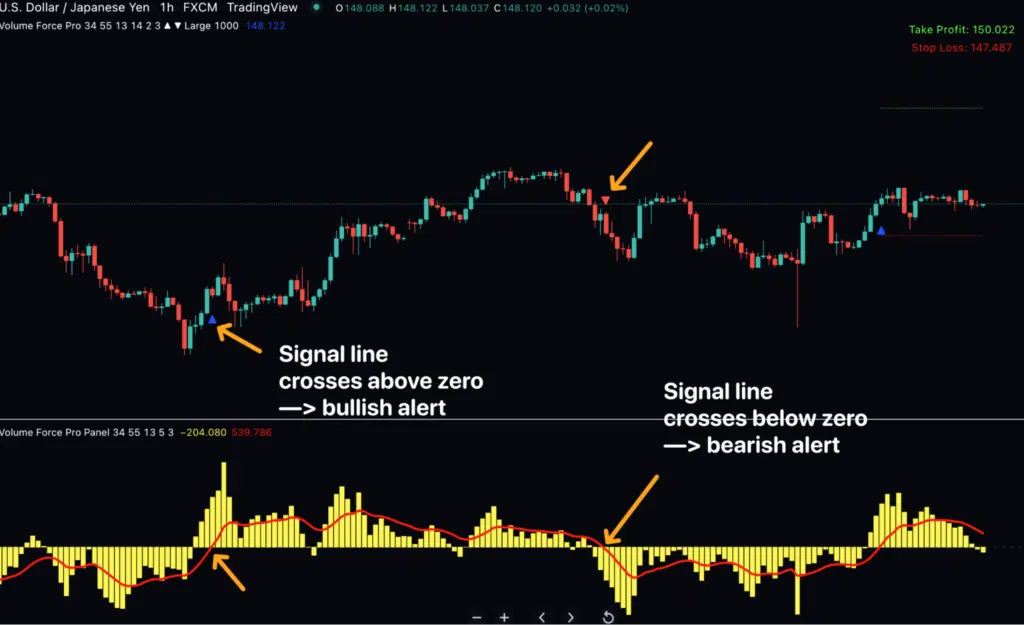
Simply, below are a few of several advantages users relish from the tool:
- Earliest awareness of an imminent bullish or bearish trend
- Knowledge of the best chart points to place profit and stop orders
- Freedom to engage in any market or timeframe desired
- Confidence of never missing promising opportunities due to the timely reminders
Doubt it? Click here to confirm these and more perks to hit your trading goals soonest.
4. Summary
Trading volume deserves more attention among traders hoping to make a killing in the industry.
It refers to the sum of all contracts and shares traded in a specific period, and analysts use the value for several profitable strategies.
Volume’s scalability and objective nature make it one of the most reliable signal generators. However, since traders battle with setbacks like false signals and manipulation, the Volume Force PRO indicator (one of its several derivatives) is highly recommended.
Please share this article with every interested trader and leave feedback in the Comment Section for engaging discussions.

